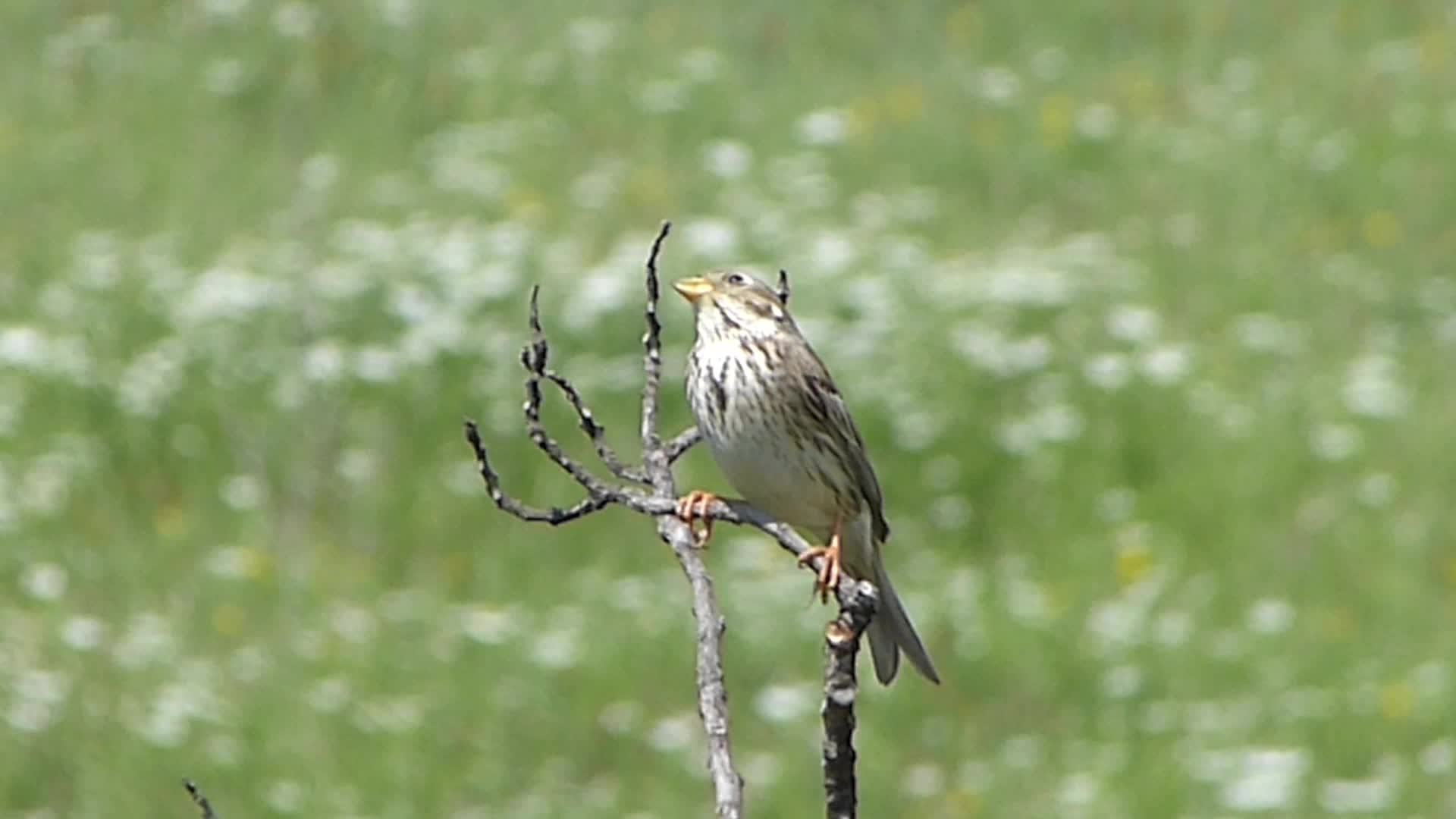Corn Bunting
A species of Old World Buntings Scientific name : Emberiza calandra Genus : Old World Buntings
Corn Bunting, A species of Old World Buntings
Botanical name: Emberiza calandra
Genus: Old World Buntings
Content
Description People often ask General Info
Description
This is an unusual bunting because the plumages of the sexes are similar in appearance, though the male is approximately 20% larger than the female. This large bulky bunting is 16–19 cm long, with a conspicuously dark eye and yellowish mandibles. Males lack any showy colours, especially on the head, which is otherwise typical of genus Emberiza. Both sexes look something like larks, being streaked grey-brown above with whitish underparts. The underparts are streaked over the flanks and breast, and the streaking forms gorget around the throat. The lesser wing coverts are distinctively dark and white-tipped. The tail is plain brown. The song of the male is a repetitive metallic sound, usually likened to jangling keys, which is given from a low bush, fence post or telephone wires. 
Size
19 cm
Colors
Brown
Gray
White
Life Expectancy
10 years
Nest Placement
Ground
Feeding Habits
Corn Bunting's diet primarily includes seeds and crickets, with increased insect consumption during chick-rearing. Foraging occurs on the ground, showcasing a preference for grain-rich habitats.
Habitat
The corn Bunting occupies open, expansive grasslands, favoring environments with minimal bush coverage such as natural steppes and agricultural regions. These habitats often feature tall grasses and cereals, influencing its nesting choices. Typically found in lowlands, the corn Bunting ranges up to 2600 meters in Central Asia's subalpine meadows. Seasonal migrations occur in some populations due to the cold.
Dite type
Granivorous
People often ask
General Info
Feeding Habits
Bird food type
Distribution Area
It breeds across southern and central Europe, north Africa and Asia across to Kazakhstan. It is mainly resident, but some birds from colder regions of central Europe and Asia migrate southwards in winter. The corn bunting is a bird of open country with trees, such as farmland and weedy wasteland. It has declined greatly in north-west Europe due to intensive agricultural practices depriving it of its food supply of weed seeds and insects, the latter especially vital when feeding the young. It has recently become extinct in Wales and Ireland, where it was previously common. 
Species Status
In England, the government's environmental organisation Natural England offers grants towards implementing measures to conserve this species, under the environmental stewardship scheme. 
Scientific Classification
Phylum
Chordates Class
Birds Order
Perching birds Family
New world sparrows Genus
Old World Buntings Species
Corn Bunting 